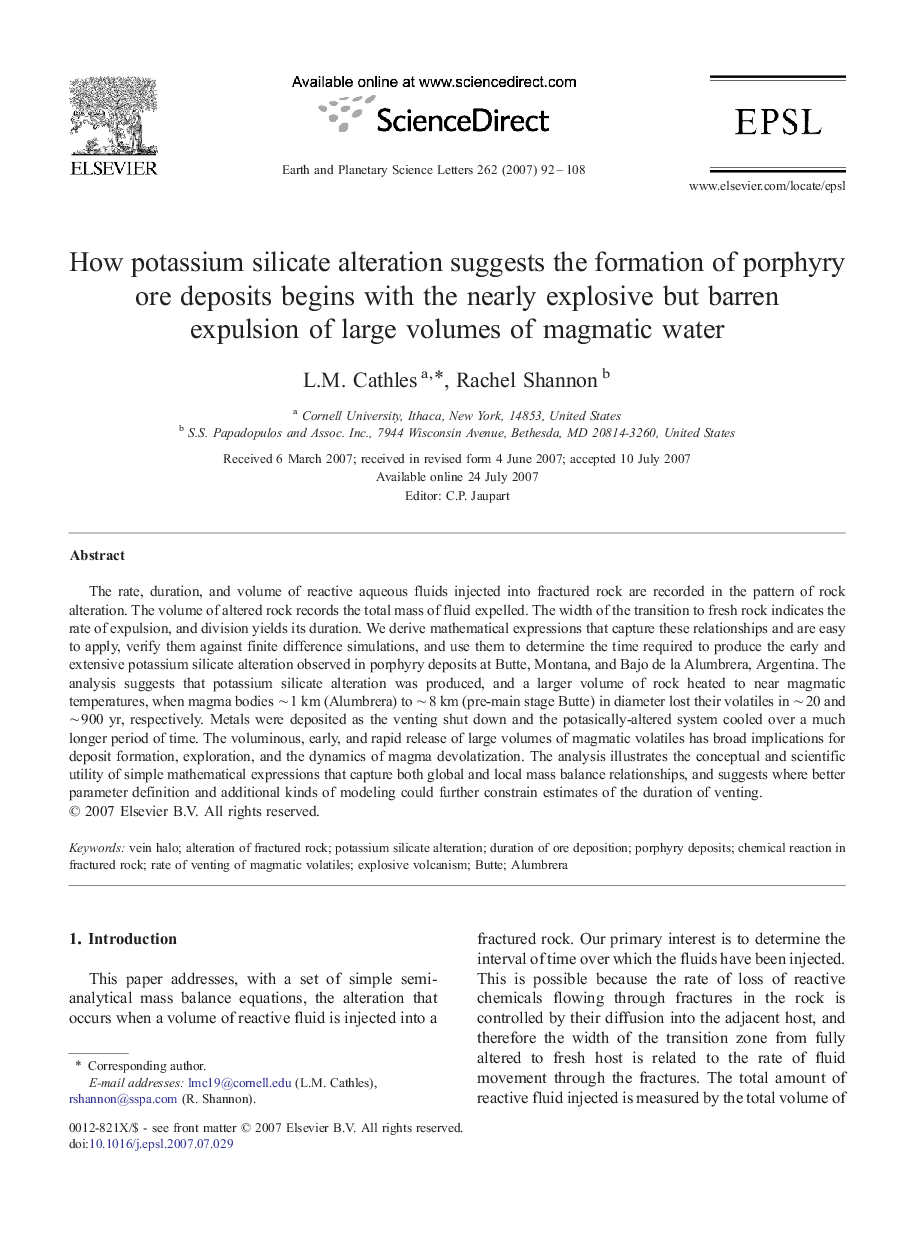| Article ID | Journal | Published Year | Pages | File Type |
|---|---|---|---|---|
| 4680141 | Earth and Planetary Science Letters | 2007 | 17 Pages |
The rate, duration, and volume of reactive aqueous fluids injected into fractured rock are recorded in the pattern of rock alteration. The volume of altered rock records the total mass of fluid expelled. The width of the transition to fresh rock indicates the rate of expulsion, and division yields its duration. We derive mathematical expressions that capture these relationships and are easy to apply, verify them against finite difference simulations, and use them to determine the time required to produce the early and extensive potassium silicate alteration observed in porphyry deposits at Butte, Montana, and Bajo de la Alumbrera, Argentina. The analysis suggests that potassium silicate alteration was produced, and a larger volume of rock heated to near magmatic temperatures, when magma bodies ∼ 1 km (Alumbrera) to ∼ 8 km (pre-main stage Butte) in diameter lost their volatiles in ∼ 20 and ∼ 900 yr, respectively. Metals were deposited as the venting shut down and the potasically-altered system cooled over a much longer period of time. The voluminous, early, and rapid release of large volumes of magmatic volatiles has broad implications for deposit formation, exploration, and the dynamics of magma devolatization. The analysis illustrates the conceptual and scientific utility of simple mathematical expressions that capture both global and local mass balance relationships, and suggests where better parameter definition and additional kinds of modeling could further constrain estimates of the duration of venting.
